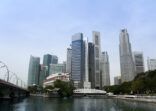Global funds and exchange-traded funds had $54bn of inflows in the first half of the year, although this was entirely down to inflows to fixed-income funds, according to Morningstar’s Global Fund Flows report.
Fixed income’s $236bn in inflows more than made up for the lacklustre performance of all other asset classes during the first six months of the year, Morningstar said.
The attraction of fixed-income funds is not altogether surprising given that last year’s sell-off in the asset class has now created attractive entry points.
US Treasuries and German bonds lost 17% and 25% in US dollar terms last year respectively as the Federal Reserve hiked interest rates seven times in a bid to tame inflation.
Morningstar noted that if you strip out January, which saw a particularly strong performance, fund and ETF net flows for the first half were basically zero.
Meanwhile, ETFs enjoyed their 113th straight month of inflows in June, while Morningstar also noted that actively managed ETFs are slowly gaining acceptance as they grew at an organic rate of 14% during the first half compared with 3% for passive ETFs.
Actively managed ETFs saw the biggest growth in Asia during the first half, up 78%, although Morningstar noted that this was starting from a low base.
In terms of fund managers themselves, JP Morgan posted the highest organic growth rate at 5.6%, while in absolute terms, iShares was the winner with $66bn.
Meanwhile, despite the backlash against ESG and it falling out of favour last year with investors due to its correlation with growth stocks, sustainable funds witnessed $51.2bn of inflows during the first half compared with $2.4bn for non-sustainble funds.

















